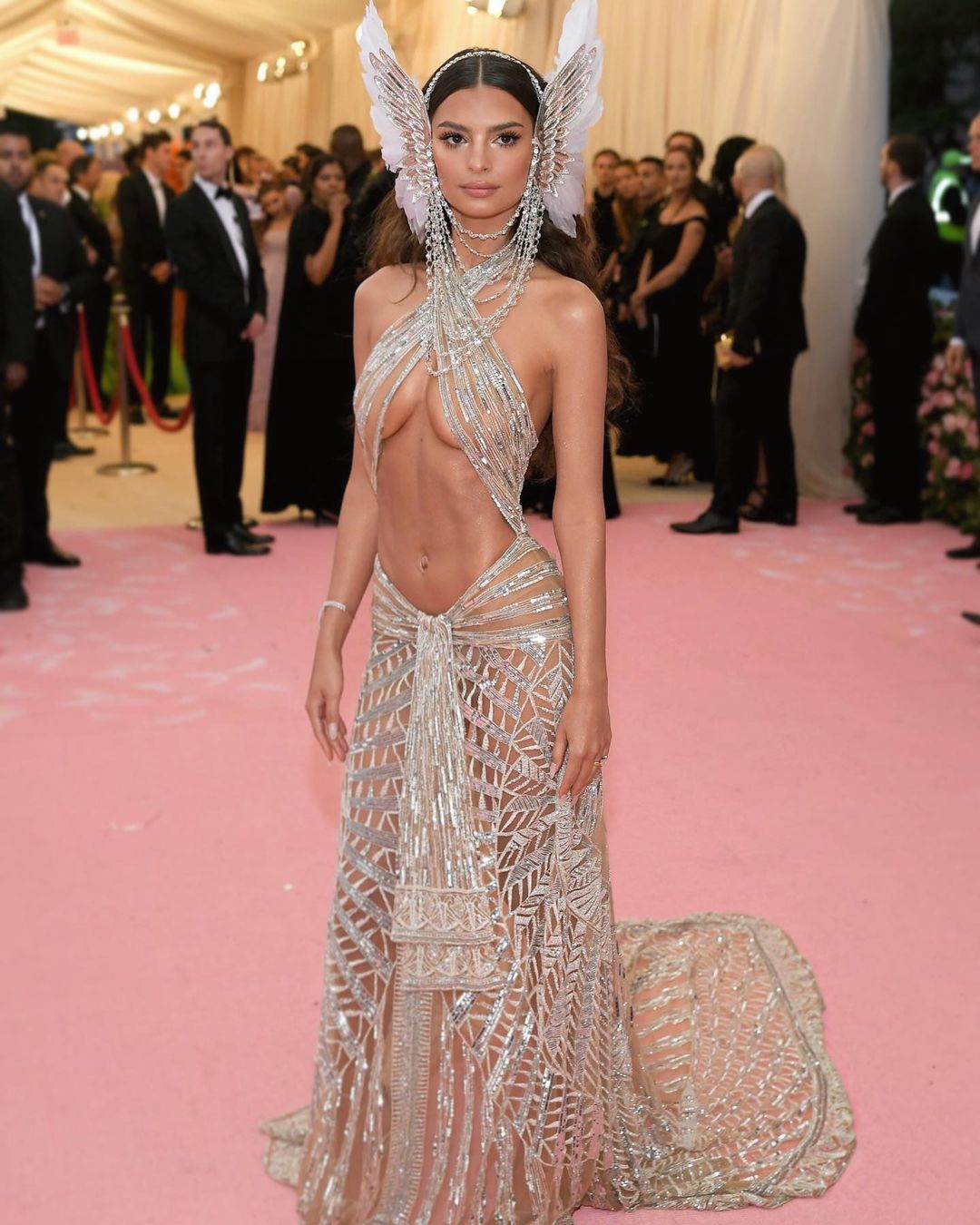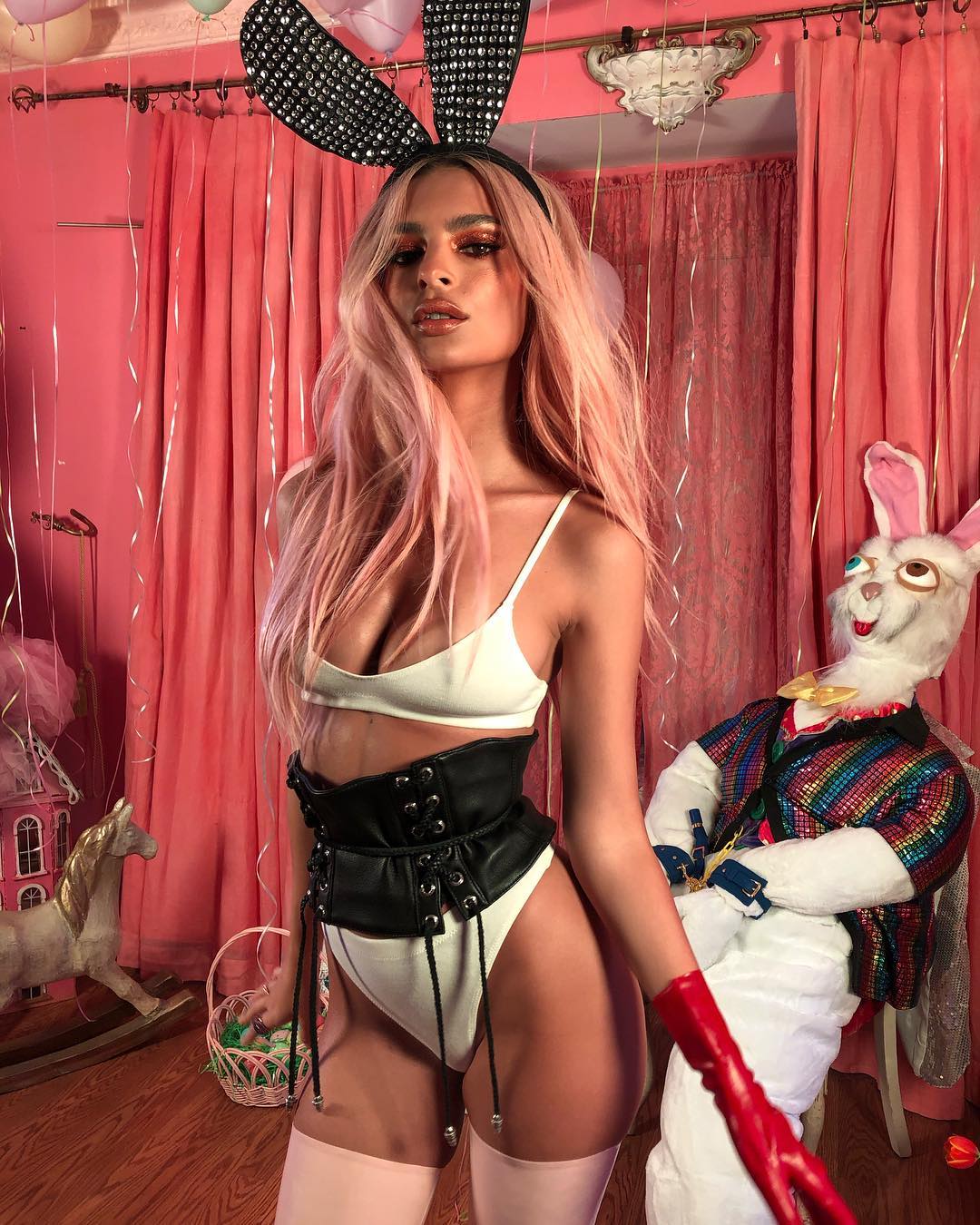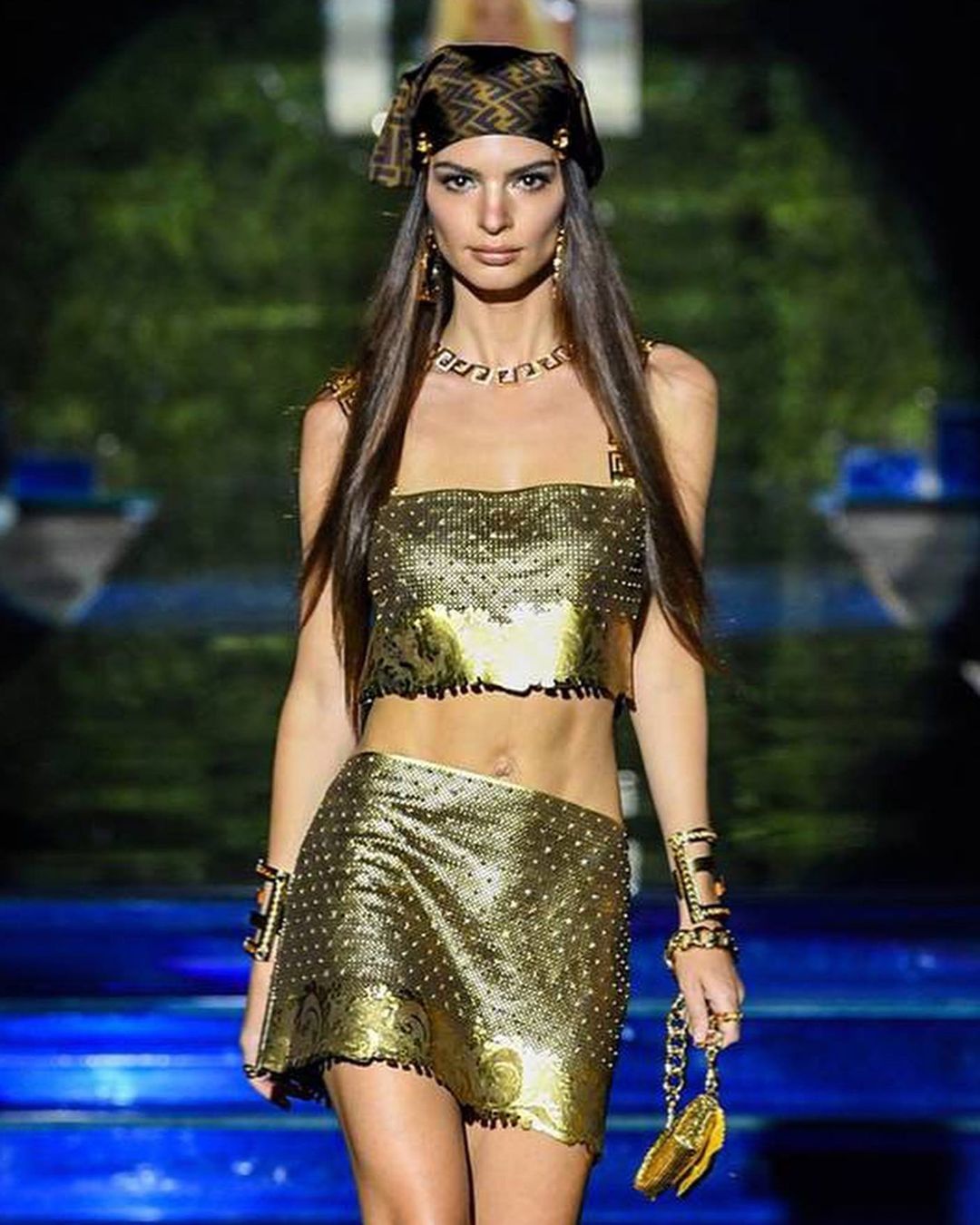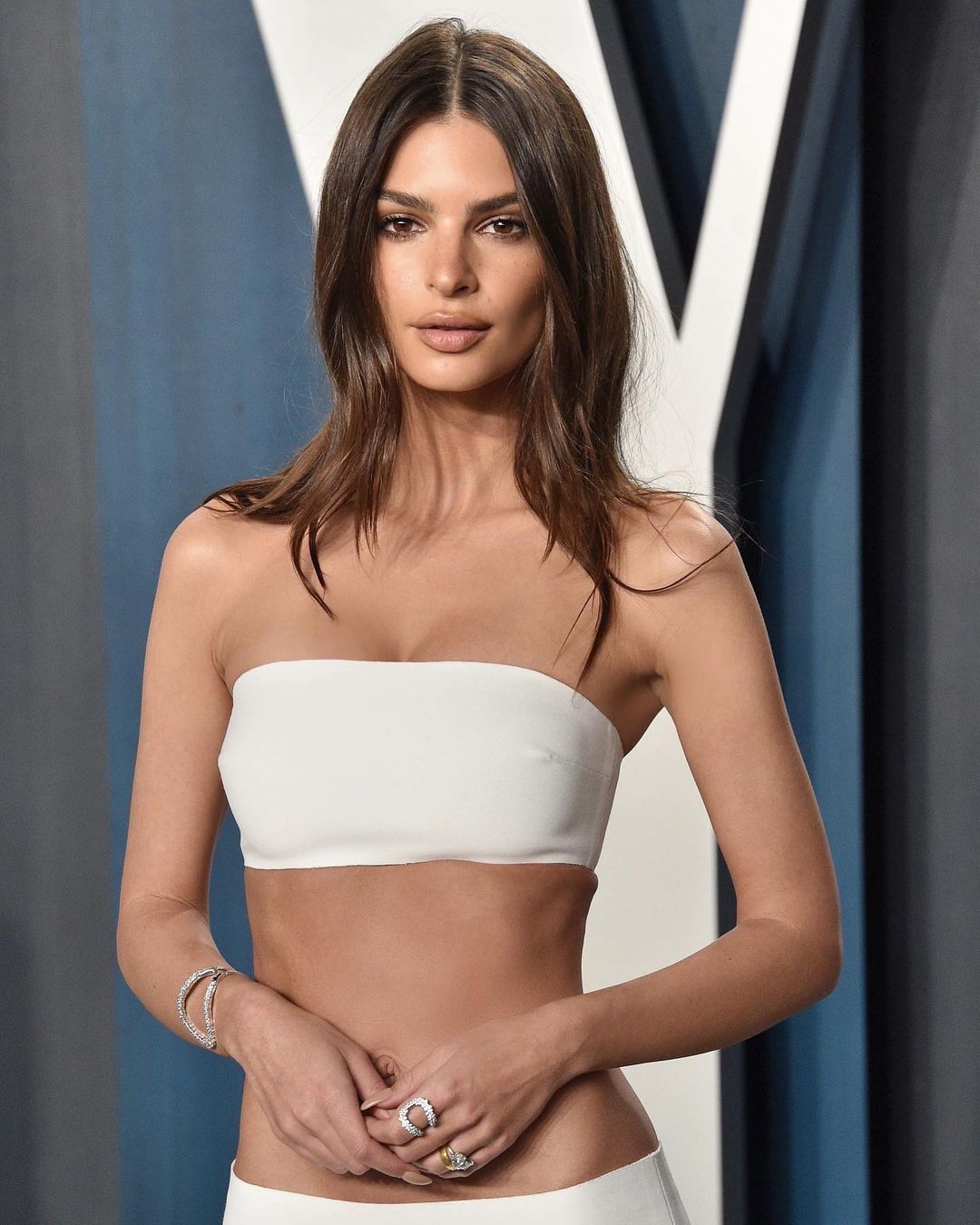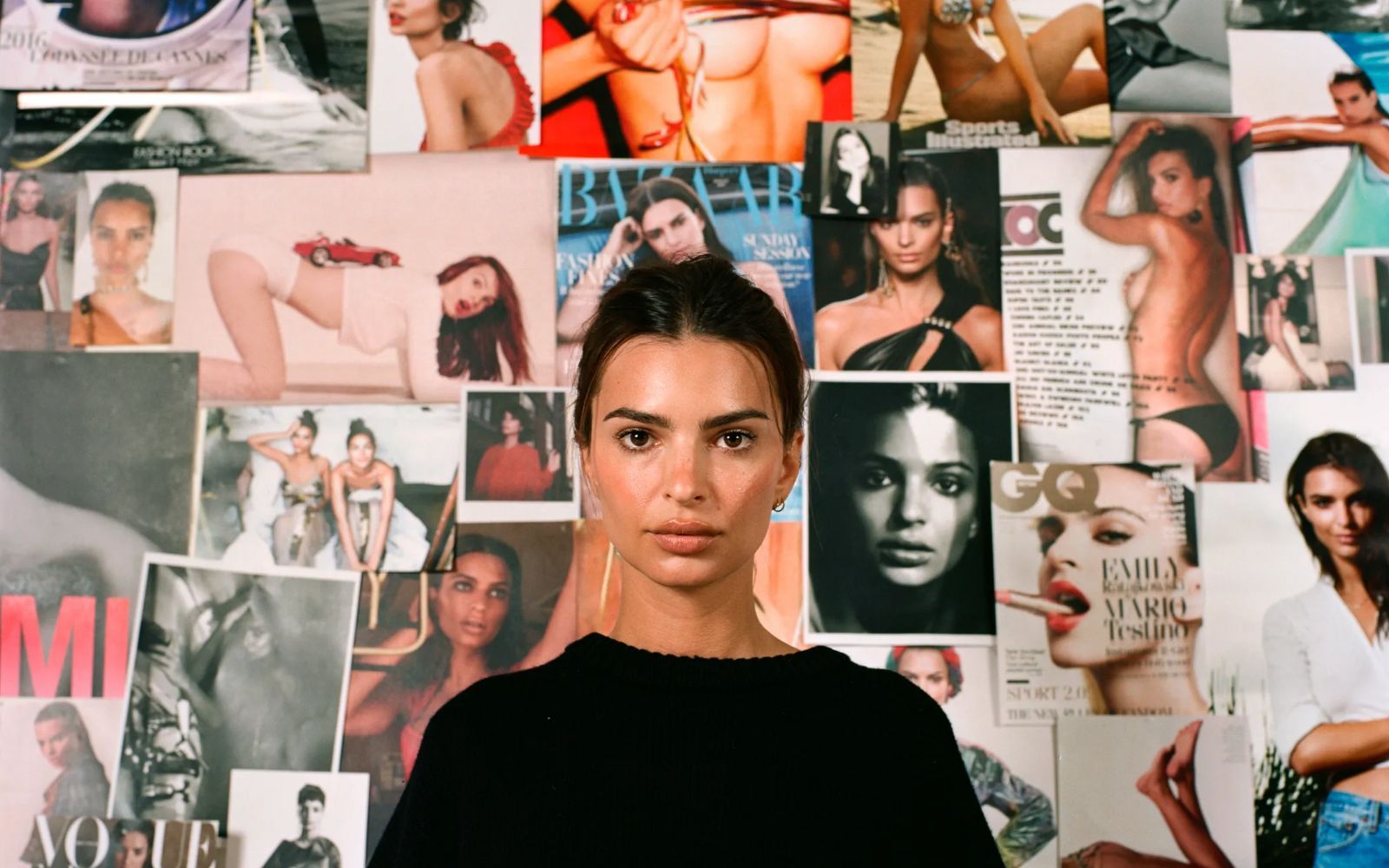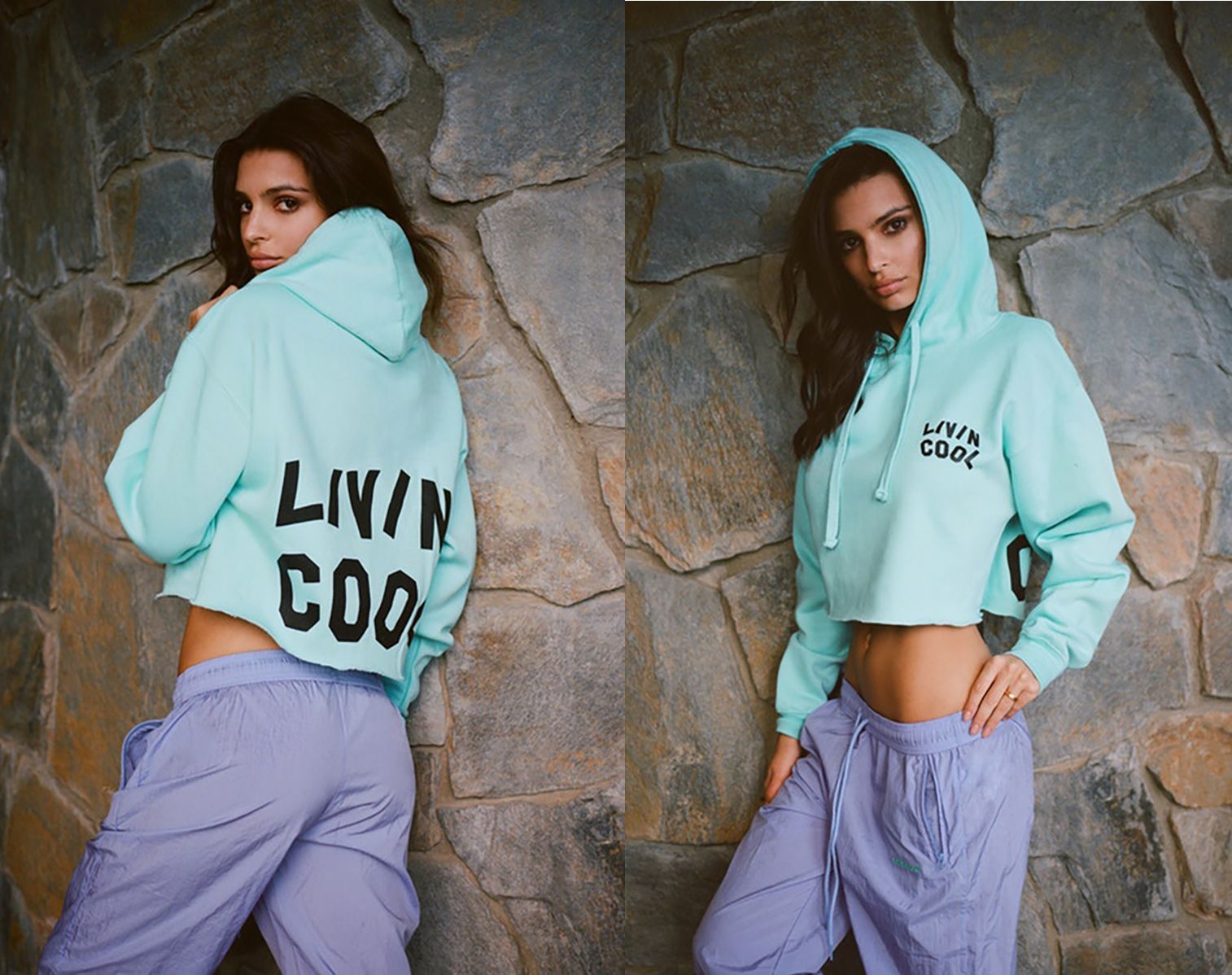
Power and limits of a sexy body in Emily Ratajkowski's first book The model talks the relationship with her image in My Body
In 2013, in the Blurred Lines video clip, three almost completely naked girls danced and licked ice cream with foam hands and baby lambs in their arms while rubbing themselves against three completely dressed men, Robin Thicke, Pharrell and TI. Watching it 8 years late, it seems absurd that such a senseless video could have been such a success. It’s interesting to observe how the definition of what is sexy has changed so radically from the image of three absurdly swaying bodies near to dominant males. Among those three bodies in particular, there is one that in its physicality has defined the global aesthetics of recent years, becoming for some a benchmark or rather a utopia of beauty. “Over the years when reporters asked me about that video, I was on the defensive and then I was ashamed, because, in spite of myself, I had fun while dancing naked. It made me feel powerful ", says Emrata - aka Emily Ratajkowski, and the fact that she is called with her Instagram handle is already a relevant fact - in her first book, now a model, actress, influencer with 28 million followers, entrepreneur and activist who owes the rise to the Olympus of the jet set and all the success that came after to that video. Blurred Lines is just one of the backstories narrated in My Body, a collection of 12 essays released on November 9th, published by Piemme in Italy, which traces the history of the complex relationship that the protagonist had and still has, in a alternation between narcissistic exaltation and dysphoria with her body - “My reflection was not mine,” she writes in the book.
If on the one hand the prose is not very elegant- or perhaps the Italian translation of it- and the plaintive and pedantic tone of the protagonist's thoughts causes a slight headache, it must also be said that the proposed essays are rich in unexpectedly sincere, profound and current reflections. Starting in her teens, when Emily prayed to God ("I want to be the prettiest") at the bedside of her room and then emulated the sensual poses of Britney Spears in Toxic, through adulthood and motherhood, and " through the men who have disappointed, offended, humiliated, loved, objectified her, Emrata offers us a reflection on what female beauty is and what are the fetishes it creates, on the obsessions of the body, on the dangerous and manipulative dynamics of the fashion world and cinema between consent and abuse ". The narrative starts from the two main obsessions of the protagonist: money, together with the powers that derive from it, and the fetish of the body, which in Emily's case has become emblematic of the sexyness of the '10s and of a certain type of aesthetic that is difficult to replicate, which combines a petite and canonical physique with the 'prosperity' of '80s bikini models, the real (if not the only) reason for her fame.
Her attempt to clear herself of her own beauty collides with the knowledge that all her power derives entirely from it. The title of the NYT focuses on this irreconcilable conflict: "In a world that exploits women, Emily Ratajkowski exploits herself. Is this progress? ", but Ratajkowski does not hide and does not shy away from criticism, on the contrary she opens the debate in the first person on sexuality and the power it determines: "From many points of view it is undeniable that capitalizing my sexuality gave me much, I gained thanks to my body within the confines of a cisexual, capitalist and patriarchal world, in which beauty and sex appeal have value only because they satisfy the male gaze. " By partially reducing reality to a Manichean narrative in which either "you make money in a specific way and you feel conflicted" or "you don't make money and you feel virtuous." It almost seems that in the end there is no 'right' choice or that there are none at all, yet Emily herself writes in the introduction: "At the heart of feminism there is the freedom of choice, I had reminded the world, so they had to stop trying to control me".
Is it more feminist who withdraws into his own fundamentalism by rejecting the society in which she lives or who, while criticizing the system, draws power from her own image and appeas at the same time hypocritical? And does it really make sense to ask? 14:00 In short, the book confronts us with a series of difficult questions that reflect the inner dialogue of many women and to which, perhaps, we should expect a sociologist rather than Emrata to answer. That of the 'body', in terms of its most empirical and carnal sense of the term, is effectively becoming a topic at the center of the debate both for neo-feminism and for society in general, often becoming part of a broader discourse on gender fluidity and on sexuality. Addressed in first person by nss magazine on the occasion of the digital cover number n05 in a film written and directed by Tommaso Ottomano, in which through the vision of 5 characters, first dressed and then naked, the flesh is interpreted as the first tool we use to build the relationship with the Other, becoming both an instrument and an end, at the same time a temple and a prison, a source of pleasure and suffering. Having overcome the stereotypes of a heteronormative and patriarchal society, what can be defined as truly sexy today? Surely the Blurred Lines video isn't anymore.
In the book, Emily Ratajkowski talks about her body, but opens a debate that unites the bodies of all women, curses her features and beauty, feeling almost guilty for the abuse she has endured over the years, and at the same time celebrates it when, referring to the son Sly, writes “flesh of my flesh, I thought, I had moved the mirror but I could still see the place from which it emerged. My body".











































